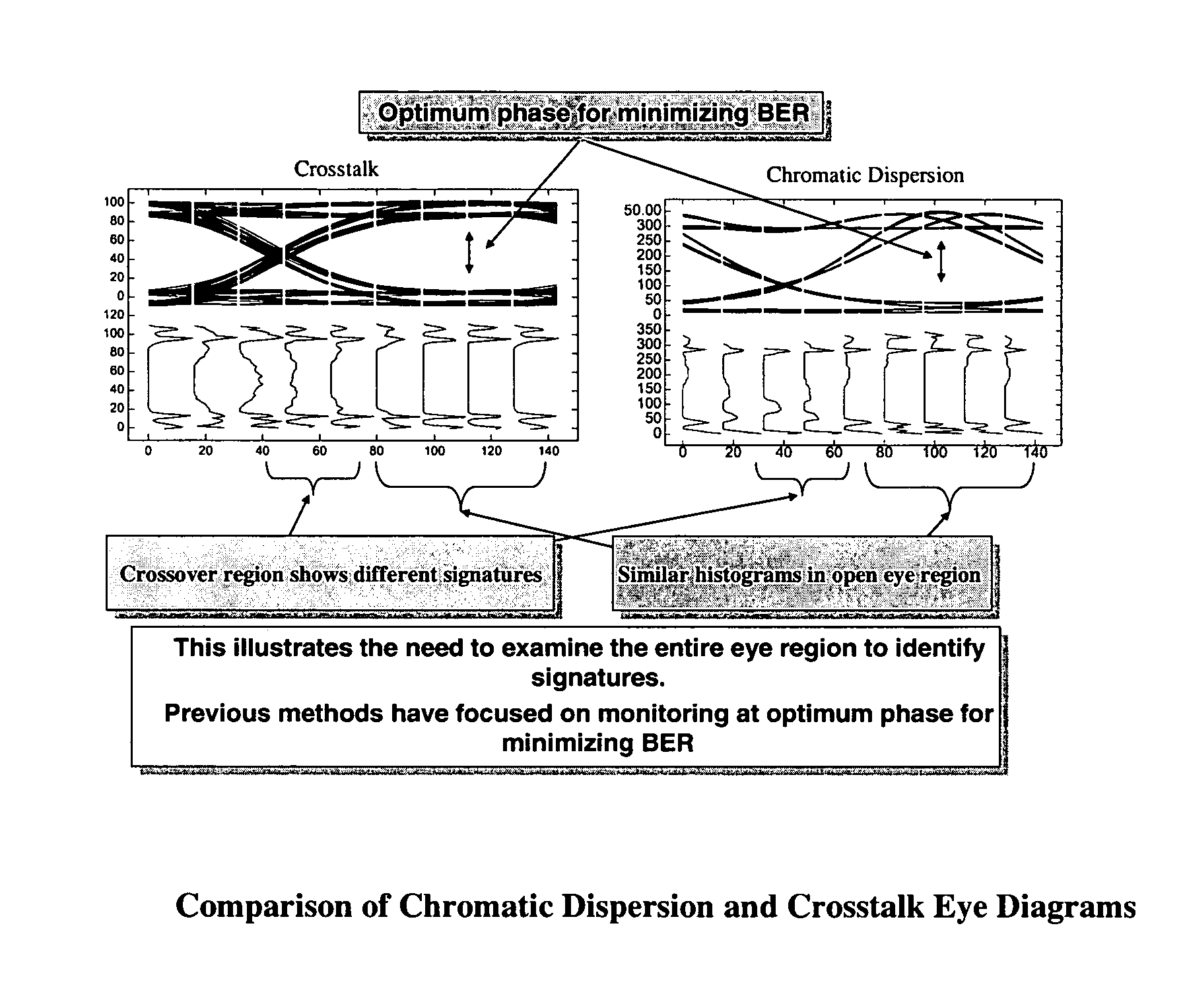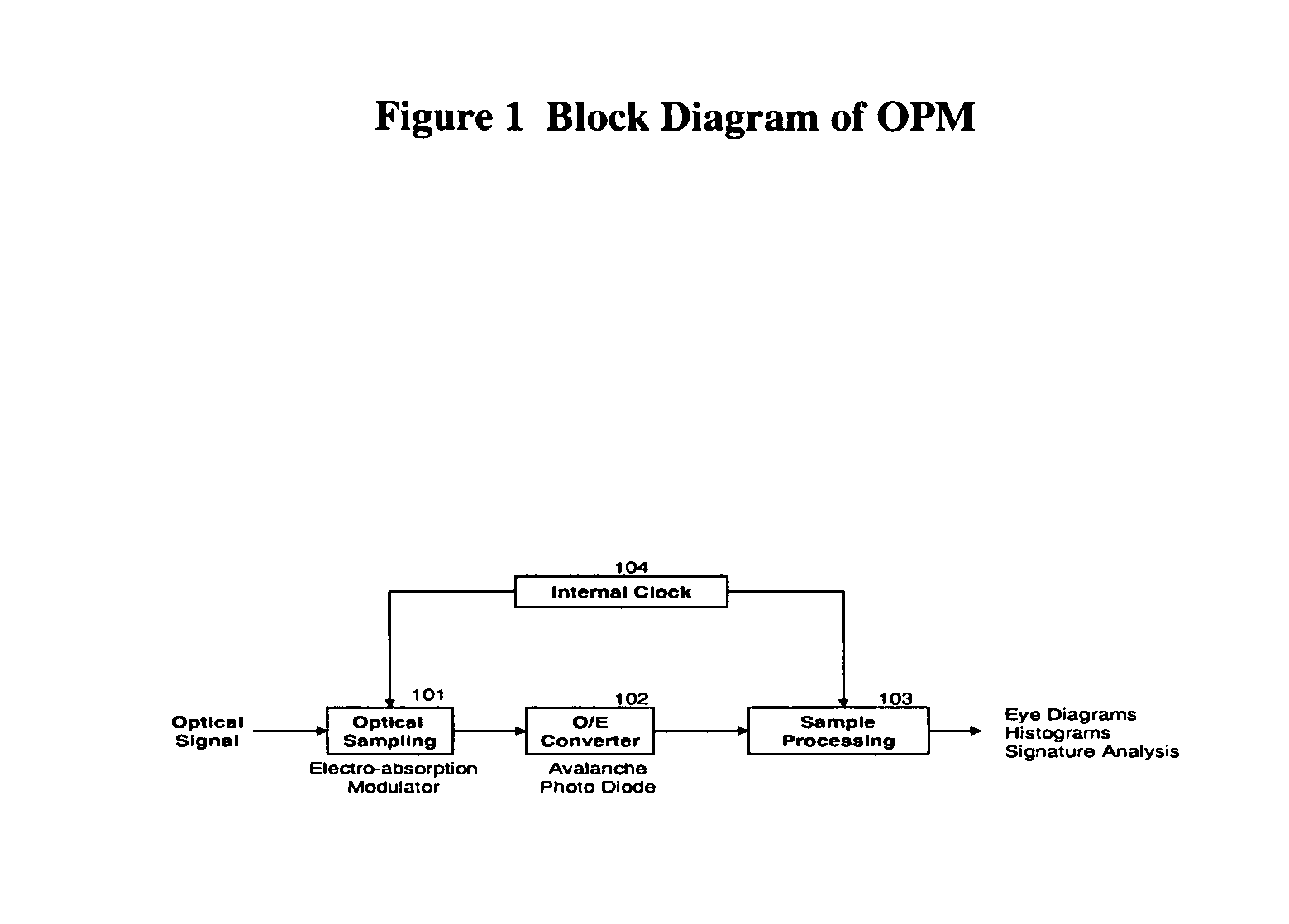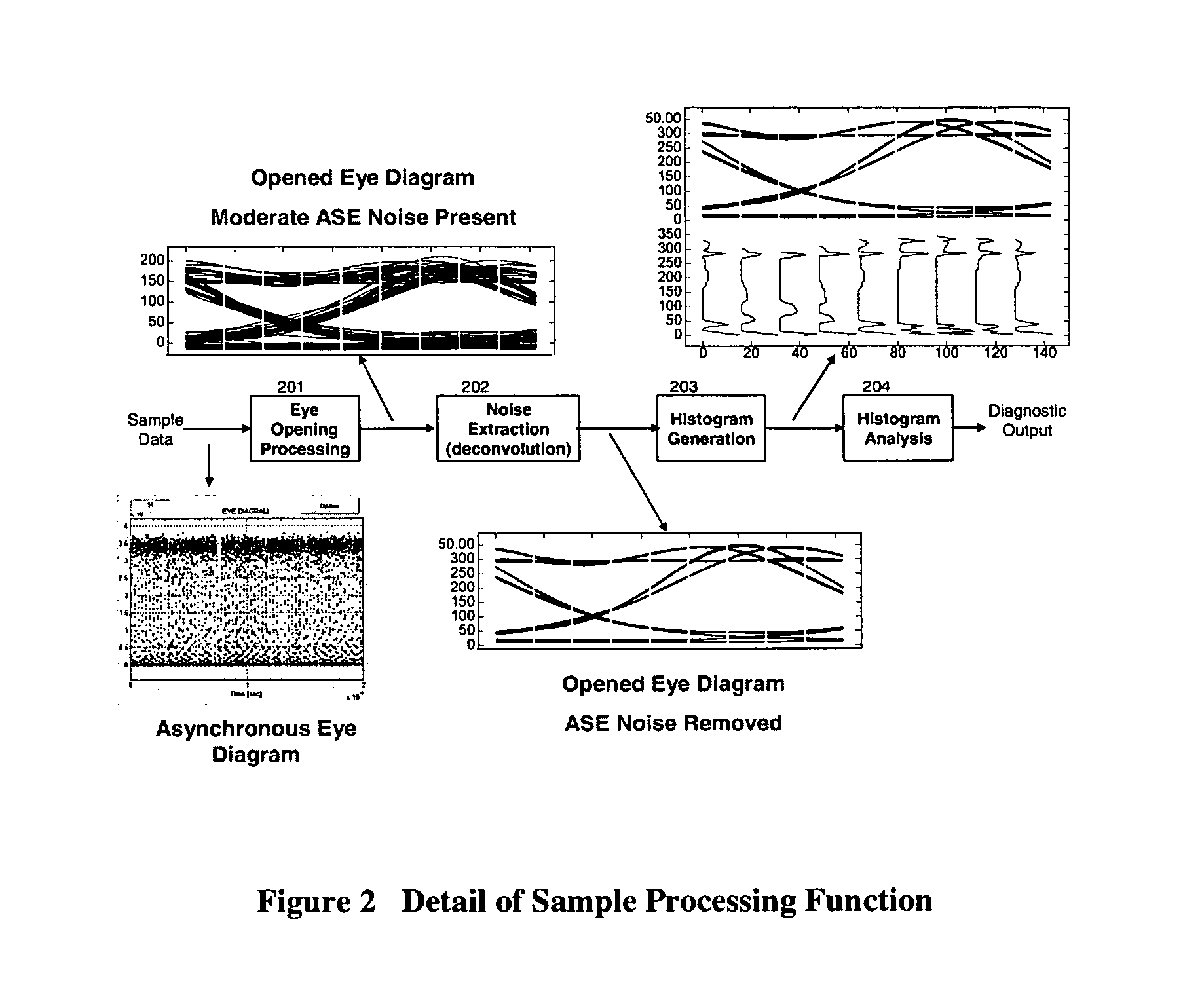Methods and systems for optical performance monitoring
a technology of optical performance monitoring and wavelength division multiplexing, applied in the direction of transmission monitoring, instruments, 2d-image generation, etc., can solve the problems of limited functionality, inability to monitor quality by spectral methods, and inability to adjust to all effects, so as to achieve the effect of removing nois
- Summary
- Abstract
- Description
- Claims
- Application Information
AI Technical Summary
Benefits of technology
Problems solved by technology
Method used
Image
Examples
Embodiment Construction
[0011]FIG. 1 shows the functional block diagram of the OPM system. An internal clock (Block 104) is used to trigger the sampling instants. Each sampling “instant” is a short sampling interval of duration around 1 / 100th the optical signal pulse period. The sampling pulse intervals from the internal clock are provided to an optical sampling device (Block 101) and the Sample Processing function (Block 103). The optical sampling function is an electro-absorption modulator that has high absorption (low output signal) outside a sampling pulse, and low absorption (measurable output signal) during a sampling pulse from the internal clock. During each sampling pulse, the output signal from the optical sampling function is sent to an Optical / Electrical (O / E) converter (an avalanche photo diode) to produce an electrical current proportional to the optical signal level during the sampling interval. The sample processing function (Block 103) records the value of each sample and its sample time. ...
PUM
 Login to View More
Login to View More Abstract
Description
Claims
Application Information
 Login to View More
Login to View More - R&D
- Intellectual Property
- Life Sciences
- Materials
- Tech Scout
- Unparalleled Data Quality
- Higher Quality Content
- 60% Fewer Hallucinations
Browse by: Latest US Patents, China's latest patents, Technical Efficacy Thesaurus, Application Domain, Technology Topic, Popular Technical Reports.
© 2025 PatSnap. All rights reserved.Legal|Privacy policy|Modern Slavery Act Transparency Statement|Sitemap|About US| Contact US: help@patsnap.com



